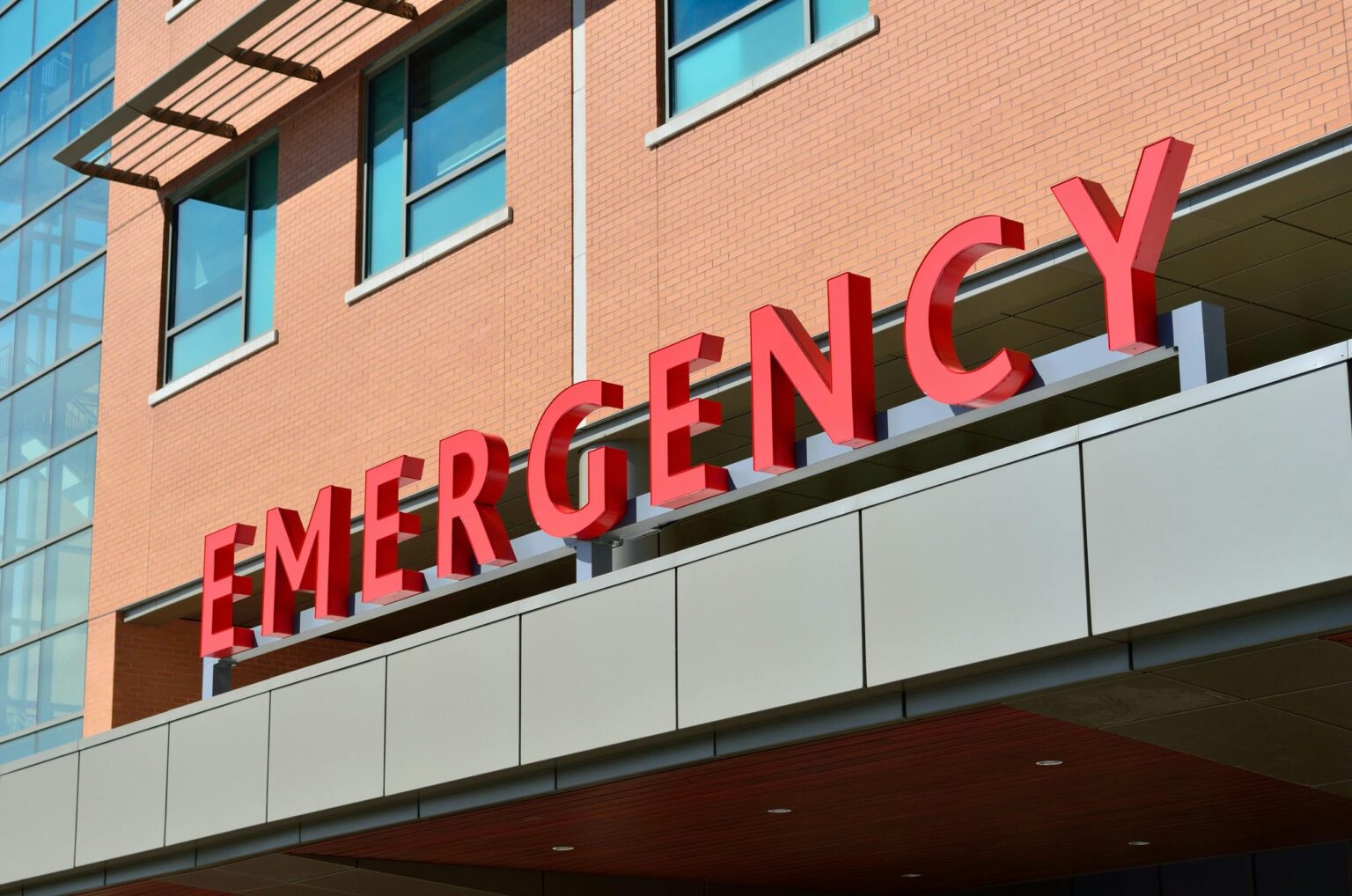One evening last December, Tieqiao Zhang felt severe stomach pain.
After it subsided later that night, he thought it might be food poisoning. When the pain returned the next morning, Zhang realized the source of his pain might not be as “simple as bad food.”
He didn’t want to wait for an appointment with his regular doctor, but he also wasn’t sure if the pain warranted emergency care, he said.
Zhang, 50, opted to visit Parkland Health’s Urgent Care Emergency Center, a clinic near his home in Dallas where he’d been treated in the past. It’s on the campus of Parkland, the city’s largest public hospital, which has a separate emergency room.
He believed the clinic was an urgent care center, he said.
A CT scan revealed that Zhang had a kidney stone. A physician told him it would pass naturally within a few days, and Zhang was sent home with a prescription for painkillers, he said.
Five days later, Zhang’s stomach pain worsened. Worried and unable to get an immediate appointment with a urologist, Zhang once again visited the Urgent Care Emergency Center and again was advised to wait and see, he said.
Two weeks later, Zhang passed the kidney stone.
Then the bills came.
The Patient: Tieqiao Zhang, 50, who is insured by BlueCross and BlueShield of Texas through his employer.
Medical Services: Two diagnostic visits, including lab tests and CT scans.
Service Provider: Parkland Health & Hospital System. The hospital is part of the Dallas County Hospital District.
Total Bills: The in-network hospital charged $19,543 for the two visits. BlueCross and BlueShield of Texas paid $13,070.96. Zhang owed $1,000 to Parkland — a $500 emergency room copay for each of his two visits.
What Gives: Parkland’s Urgent Care Emergency Center is what’s called a freestanding emergency department.
The number of freestanding emergency rooms in the United States grew tenfold from 2001 to 2016, drawing attention for sending patients eye-popping bills. Most states allow them to operate, either by regulation or lack thereof. Some states, including Texas, have taken steps to regulate the centers, such as requiring posted notices identifying the facility as a freestanding emergency department.
Urgent care centers are a more familiar option for many patients. Research shows that, on average, urgent care visits can be about 10 times cheaper than a low-acuity — or less severe — visit to an ER.
But the difference between an urgent care clinic and a freestanding emergency room can be tough to discern.
Generally, to bill as an emergency department, facilities must meet specific requirements, such as maintaining certain staff, not refusing patients, and remaining open around the clock.
The freestanding emergency department at Parkland is 40 yards away from its main emergency room and operates under the same license, according to Michael Malaise, the spokesperson for Parkland Health. It is closed on nights and Sundays.
(Parkland’s president and chief executive officer, Frederick Cerise, is a member of KFF’s board of trustees. KFF Health News is an editorially independent program of KFF.) The hospital is “very transparent” about the center’s status as an emergency room, Malaise told KFF Health News in a statement.
Malaise provided photographs of posted notices stating, “This facility is a freestanding emergency medical care facility,” and warning that patients would be charged emergency room fees and could also be charged a facility fee. He said the notices were posted in the exam rooms, lobby, and halls at the time of Zhang’s visits.
Zhang’s health plan required a $500 emergency room copay for each of the two visits for his kidney stone.
When Zhang visited the center in 2021 for a different health issue, he was charged only $30, his plan’s copay for urgent care, he said. (A review of his insurance documents showed Parkland also used emergency department billing codes then. BCBS of Texas did not respond to questions about that visit.)
One reason “I went to the urgent care instead of emergency room, although they are just next door, is the copayment,” he said.
The list of services that Parkland’s freestanding emergency room offers resembles that of urgent care centers — including, for some centers, diagnosing a kidney stone, said Ateev Mehrotra, a health care policy professor at Harvard Medical School.
Having choices leaves patients on their own to decipher not only the severity of their ailment, but also what type of facility they are visiting all while dealing with a health concern. Self-triage is “a very difficult thing,” Mehrotra said.
Zhang said he did not recall seeing posted notices identifying the center as a freestanding emergency department during his visits, nor did the front desk staff mention a $500 copay. Plus, he knew Parkland also had an emergency room, and that was not the building he visited, he said.
The name is “misleading,” Zhang said. “It’s like being tricked.”
Parkland opened the center in 2015 to reduce the number of patients in its main emergency room, which is the busiest in the country, Malaise said. He added that the Urgent Care Emergency Center, which is staffed with emergency room providers, is “an extension of our main emergency room and is clearly marked in multiple places as such.”
Malaise first told KFF Health News that the facility isn’t a freestanding ER, noting that it is located in a hospital building on the campus. Days later, he said the center is “held out to the public as a freestanding emergency medical care facility within the definition provided by Texas law.”
The Urgent Care Emergency Center name is intended to prevent first responders and others facing life-threatening emergencies from visiting the center rather than the main emergency room, Malaise said.
“If you have ideas for a better name, certainly you can send that along for us to consider,” he said.
Putting the term “urgent” in the clinic’s name while charging emergency room prices is “disingenuous,” said Benjamin Ukert, an assistant professor of health economics and policy at Texas A&M University.
When Ukert reviewed Zhang’s bills at the request of KFF Health News, he said his first reaction was, “Wow, I am glad that he only got charged $500; it could have been way worse” — for instance, if the facility had been out-of-network.
The Resolution: Zhang said he paid $400 of the $1,000 he owes in total to avoid collections while he continues to dispute the amount.
Zhang said he first reached out to his insurer, thinking his bills were wrong, before he reached out to Parkland several times by phone and email. He said customer service representatives told him that, for billing purposes, Parkland doesn’t differentiate its Urgent Care Emergency Clinic from its emergency department.
BlueCross and BlueShield of Texas did not respond to KFF Health News when asked for comment.
Zhang said he also reached out to a county commissioner’s office in Dallas, which never responded, and to the Texas Department of Health, which said it doesn’t have jurisdiction over billing matters. He said the staff for his state representative, Morgan Meyer, contacted the hospital on his behalf, but later told him the hospital would not change his bill.
As of mid-May, his balance stood at $600, or $300 for each visit.
The Takeaway: Lawmakers in Texas and around the country have tried to increase price transparency at freestanding emergency rooms, including by requiring them to hand out disclosures about billing practices.
But experts said the burden still falls disproportionately on patients to navigate the growing menu of options for care.
It’s up to the patient to walk into the right building, said Mehrotra, the Harvard professor. It doesn’t help that most providers are opaque about their billing practices, he said.
Mehrotra said that some freestanding emergency departments in Texas use confusing names like “complete care,” which mask the facilities’ capabilities and billing structure.
Ukert said states could do more to untangle the confusion patients face at such centers, like banning the use of the term “urgent care” to describe facilities that bill like emergency departments.
Bill of the Month is a crowdsourced investigation by KFF Health News and NPR that dissects and explains medical bills. Do you have an interesting medical bill you want to share with us? Tell us about it!
KFF Health News is a national newsroom that produces in-depth journalism about health issues and is one of the core operating programs at KFF—an independent source of health policy research, polling, and journalism. Learn more about KFF.

